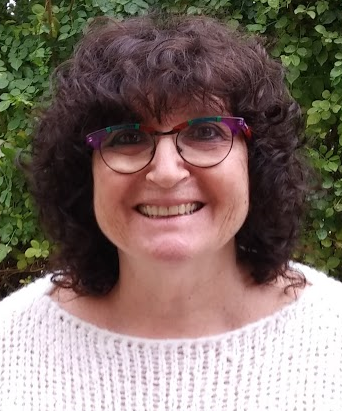 Hanah Margalit
Hanah Margalit
Microbiology and Molecular Genetics IMRIC, Faculty of MedicineThe Hebrew University of Jerusalem, Israel
http://margalit.huji.ac.il
Introduced by: Christine Orengo, ISCB President University College London United Kingdom
Time: Wednesday, July 26, 8:45 AM - 9:45 AM
Room: Lumière Auditorium
Insights from RNA-seq experiments into post-transcriptional control mechanisms
The genomic revolution has led to the development of large-scale technologies that measure in one experiment cellular features at a genome-wide scale. One top technology is RNA-seq, usually used to compare gene expression between two cellular states, but variations of which have opened the door to study post-transcriptional regulation of gene expression at an unprecedented scope. In fact, the knowledge and understanding of different mechanisms of post-transcriptional regulation have advanced side by side with the progress in these technologies. In my talk I will highlight original angles of the RNA-seq technology and data analysis, along with the novel biological knowledge they have led to. These include: a variation of RNA-seq (RIL-seq) by which the post-transcriptional regulatory network of non-coding RNAs and their targets in bacteria is deciphered. Innovative analysis of RIL-seq data, leading to discovery of novel regulatory RNAs embedded within mRNAs. Identification of transcription termination sites by non-conventional analysis of RNA-seq read patterns rather than read counts. This approach enables exploiting the RNA-seq data to detect premature transcription termination sites with a regulatory role. These examples, as well as other examples from other studies, emphasize the power of tailored RNA-seq experiments and creative analyses of the data for expanding our understanding of the molecular mechanisms an RNA molecule is involved in.
Biography
Hanah Margalit is a Professor of Computational Molecular Biology at the Hebrew University of Jerusalem, Israel. She received her BSc in Mathematics and Biology and her PhD in Computational Biology from the Hebrew University. Her PhD research concerned mathematical modeling and simulation of molecular control mechanisms. For her postdoc she went to NIH, where she specialized in bioinformatics. When she returned to Israel she was among the first to develop this field within the scientific community in Israel. She was the first president of the Israeli Society of Bioinformatics and Computational Biology, was awarded the Landau Prize in Systems Biology, The Rothschild Prize in Life Sciences, Nature Award for Lifetime Achievement in Mentoring, and is an elected Fellow of the International Society of Computational Biology. Her studies concern integration of various types of genomic, transcriptomic and proteomic data, in order to understand the intertwining of different regulation levels in the cell. These include mainly transcription regulation by transcription factors and post-transcriptional regulation by small non-coding RNAs and ribonucleases. Among the contributions of the group is the first systematic discovery of novel small RNA-encoding genes based on the genome sequence, detection of mixed regulatory circuits involving various levels of regulation, the discovery of a novel immuno-evasion mechanism mediated by a viral miRNA, and the deciphering of post-transcriptional regulation networks of regulatory RNAs and targets, using state-of-the-art RNA-seq-based technologies.
